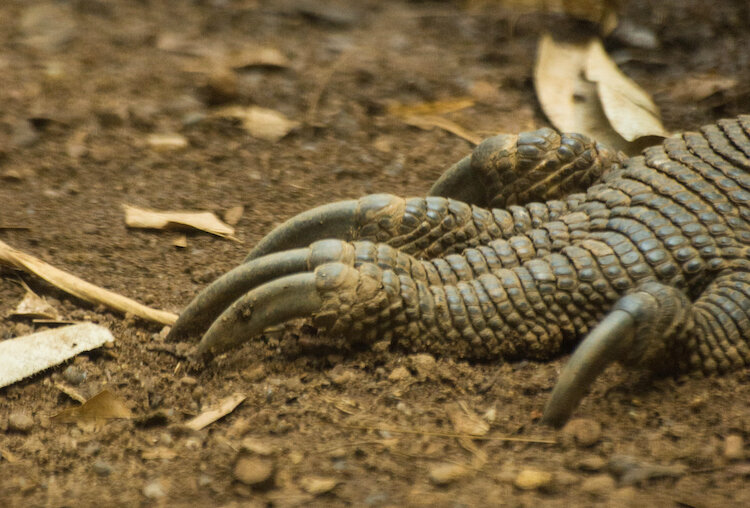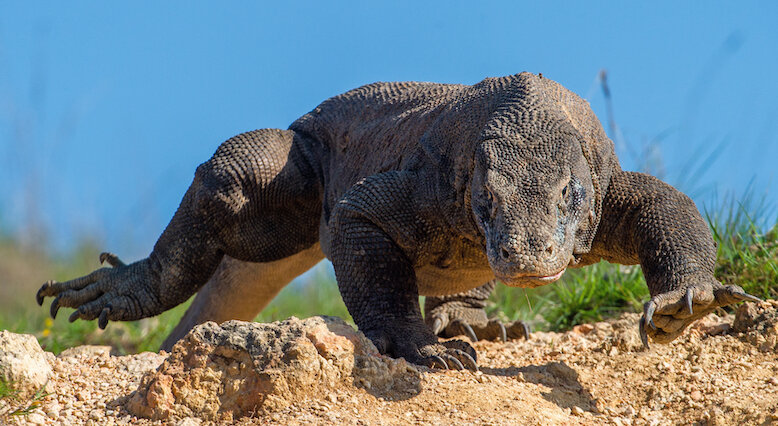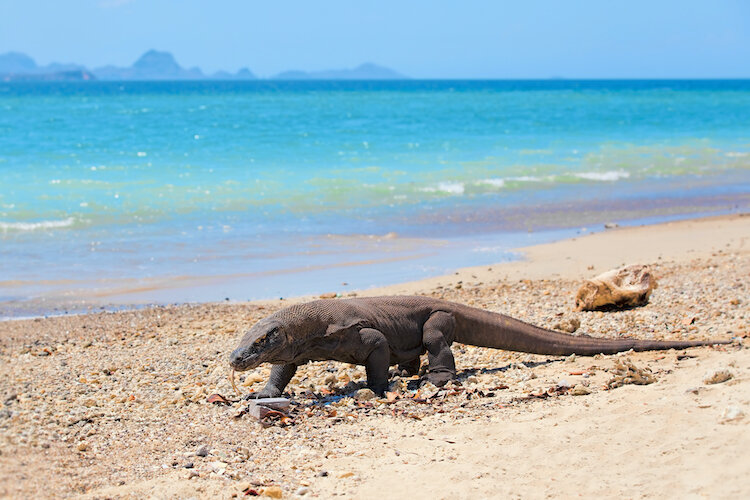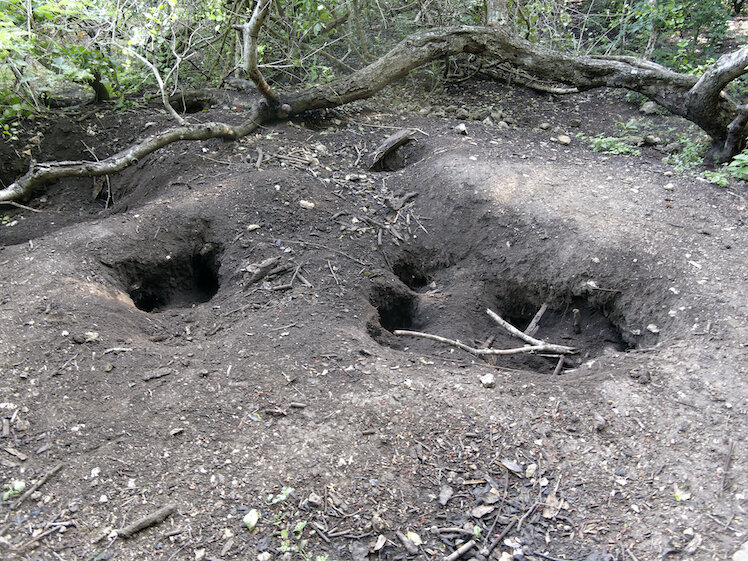Komodo dragons are the biggest lizards.
They live on a just few islands in Indonesia.
They are so big that they hunt large animals such as buffalo and deer.
Females lay eggs in holes and leave them.
Komodo dragons are the largest lizards © iStock
What is a Komodo dragon?
The Komodo dragon is the largest of all the lizards. They belong to the lizard family of monitors. Lizards are part of the reptile group of animals. They are named for the island of Komodo, which is one of the only four places in the world where they are found.
Appearance and behaviours
Komodo dragons grow to about 2.5 metres in length. Males weigh about 100 kilograms and females about 85 kilograms. All Komodo dragons have a long neck and a tail that is longer than its body. Male dragons have bigger heads and longer tails than the females.
Komodo dragons have long, sharp claws. ©Getty
All dragons have short, powerful legs with strong, sharp claws. They can deliver a crushing blow with the tail.
Dragons are generally a sandy - brown colour with dark markings, though this may vary.
A Komodo dragon’s long tongue with a forked end. ©Getty
The Komodo dragon has a forked tongue which it flicks in and out. When the tongue flicks out it collects scents (smells) in the air, and when it flicks in, information about the scents is picked up by a special organ called Jacobson’s Organ inside the dragon's mouth.
The Jacobson’s Organ lets the animal's brain know what the smells are and in what direction they are located.
Their teeth are sharp and grooved, designed for tearing prey apart. Pieces of meat from a meal stick in the grooves and develop bacteria which poisons the next prey animal attacked by the dragon and kills it.
Komodo dragons can run quite fast, but only in short bursts. ©Getty
Dragons are good at climbing trees and can run quite fast.
Where Komodo dragons live
A Komodo dragon walking along a Komodo beach ©Getty
Komodo dragons living in the wild are found mainly on the Indonesian islands that are part of the Komodo National Park, created in 1980 initially to protect the Komodo dragon, but now to conserve other animals, including marine species. The national park includes three larger islands: Komodo, Padar, and Rinca. It has a total area of 1,733 km2 (603 km2 of it land).
The Komodo dragons live in the forests and open grasslands on the islands.
A map showing some of the Indonesian islands, on a few of which Komodo dragons are found. ©Getty
Diet: What they eat
A Komodo Dragon rests in this position ©kidcyber
They are carnivorous (eating only meat), and are ferocious predators (hunters). Adult dragons eat wild pigs, deer, young buffalo, and, on the island of Rinca, long-tailed macaque monkeys. Komodo dragons have been known to attack humans but this is rare.
Dragons bite their prey and inject a venom that causes the bitten animal to bleed. The bite becomes infected, either from germs in the dragon's mouth or from the environment that the animal travels through until it dies, which can take up to four days. The dragon slowly follows the dying prey and eats it when it catches the weakened animal or when the animal is dead. Other dragons follow also, and they fight each other to get some of the meal.
Komodo dragons fight to get a share of the prey. ©Getty
To catch a monkey, the Komodo dragon lies in wait, camouflaged against the ground. When the monkey is close, the dragon gives the monkey a mighty whack with its strong tail.
Life Cycle
Komodo dragons live alone, and only look for each other for breeding. Breeding season is from April to July. Females are ready to mate when they are 4 - 5 years old. Males are ready when they are 7 years old.
A couple of months after mating, a female Komodo dragon is ready to lay her eggs. She digs 4 or 5 holes about a metre deep and a metre wide. To confuse predators that might try to eat her eggs, she lays eggs in only one of the holes. She fills in all the holes and goes away.
Some nest holes made by a female Komodo dragon. ©Getty
Females lay between 15 and 30 eggs which take 8 -9 months to hatch, but usually only about half of the eggs hatch.
Adult dragons do not look after their eggs or their young.
When they hatch, the young dragons, which are about 34 centimetres long, climb into trees and live there for 4 -5 years. They feed on insects, small lizards and snakes. As they grow they hunt and eat rats, mice and snakes. They are about 1 metre long when they come out of the trees to live on the ground. For their protection, young Komodo dragons dig sleeping burrows, about a metre long, into the side of a hill.
A Komodo dragon swimming. ©Getty
Conservation status
The Komodo dragon is Endangered, and it is thought that there are less than 3000 left in the wild. The destruction of their habitat is the main cause of their reduced numbers.












